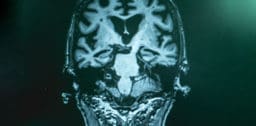Sarcopenia in liver disease: effect of pre-transplant intervention on post-transplant outcomes
Sarcopenia, defined as the loss of muscle mass associated with aging, is present in more than 30% of elderly persons and observed worldwide. Not surprisingly, a greater prevalence of sarcopenia is noted in patients residing in nursing homes.
New study evaluates efficacy of pet imaging to manage chronic liver diseases
While liver biopsies are powerful and reliable, they are also invasive, painful, limited and subject to complications. These effects may soon be a thing of the past for some patients thanks to new research showing PET imaging with the F-FAC radiotracer can be used as a non-invasive substitute.
EASL governing board announces new vice-secretary
08 October 2018, Geneva, Switzerland: On 17 September, 2018, Prof. Philip Newsome was unanimously nominated to the position of EASL Vice-Secretary, taking over from Prof. Frank Tacke who stepped down from this position in order to pursue new academic challenges.
A web-based program is as effective as group counseling for patients with non-alcoholic fatty liver disease
A new study found a web-based intervention to be an effective and convenient approach to manage lifestyle changes in patients with NAFLD, reports the Journal of Hepatology.
EASL nonalcoholic fatty liver disease summit: uniting clinicians, experts, and industry
Geneva, Switzerland, 20 September 2018 - The EASL Nonalcoholic Fatty Liver Disease (NAFLD) Summit commenced today at the Starling Hotel Conference Centre in Geneva, Switzerland, attended by over 300 basic and clinical researchers, industry, and renowned specialists from around the world.
7 recent reports on obesity risks in liver disease, lifestyle intervention
Physicians and researchers have noted the increase in liver disease over the last couple decades, especially nonalcoholic fatty liver disease, correlates significantly with the increase in obesity and overweight.
Existing liver drug can help treat alzheimer’s
Research reveals that an existing drug used to treat liver disease could also be employed in Alzheimer's disease therapy. The drug "heals" malfunctioning elements at cellular level.








